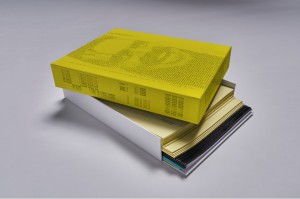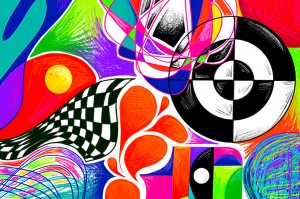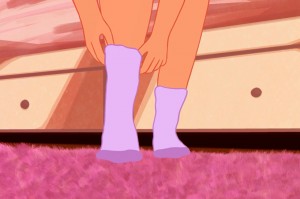“Being published in print is still a big deal”: Alec Dudson, Intern Magazine
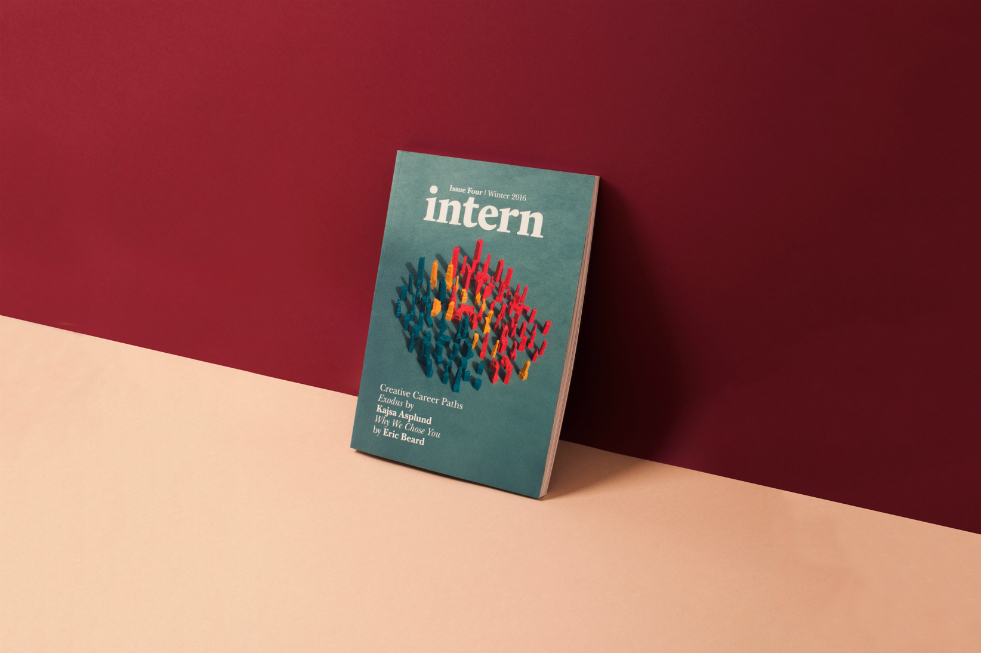
Alice Gray discusses a heap of contemporary issues — consumer trends, the value of young people’s skills, and ethical issues in publishing — with Intern Magazine Editor-in-Chief Alec Dudson…
“We believe that young people are the future”, reads the Twitter bio belonging to Intern magazine. It’s a publication which has run four issues since 2013 on the back of a successful Kickstarter campaign, headed up by Editor-in-chief Alec Dudson.
The USP, if you will, of Intern is that it’s an independent magazine created for and by the creative youth, whom they consider an unappreciated but heavily relied-upon workforce. The magazine and accompanying web platform aim to represent and promote the value of interns through 100% paid commissions from junior writers, editors, illustrators and photographers. The web site also showcases the work of creatives from around the world that fall within a two-year bracket of graduating. Contributors are all credited in full in the magazine’s index, with ever-so-important social media handles and website links.
The result is a slick visual artefact that stands up to par with the big names in the crowded arena of art and design independent magazines, which is more than intentional, as Dudson tells me.
“I want to make a point that we can make something comprised almost entirely of work by people who are considered not quite there yet,” he says; “and that when you sit Intern next to publications where the contributor base is predominantly professional, it can more than hold its own. I think that’s a really important statement to make in the face of the lack of value graduates are assumed to have.”
So, what strategies have Intern got in place to elevate the perceived value of young people’s skills?
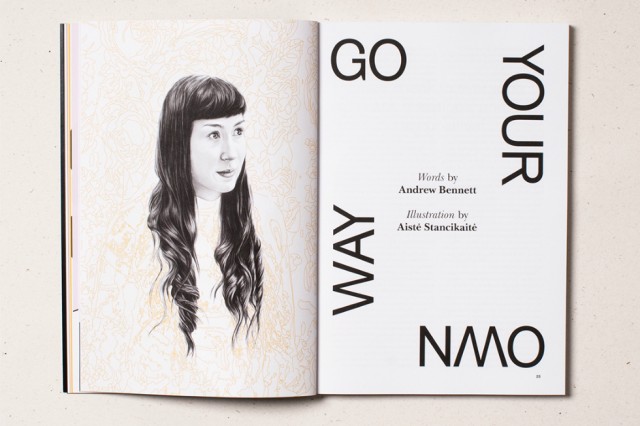
I met with Dudson on a Tuesday morning in Manchester. He’d already been in an 8am meeting regarding updates to Intern’s web editorial, and his mind was almost visibly still whirring from it. Thankfully, before I can trip up over any formalities or even consider nervousness, he has launched into a very informative answer to a not-yet asked question about the new website.
Dudson has observed the increasing demand for a magazine to have a functional web platform alongside it’s print offer, and his vision for Intern’s online presence is to “respond in different ways to the themes that we’re exploring in the magazine… To be a reaction or a discussion off the back of it”. He speaks self-critically of what lead to the decision to update the website. “If you went on the website as it was, saw the talent pages, and then saw that there was a £10 magazine, I’d be thinking to myself I’m probably not going to pay £10 for 144 pages of this. It’s very one-dimensional.”
Print vs pixels is a challenge that we’ve seen many art and design journals try to navigate since the digital age has taken over. It affects content, aesthetic, readerships, and business plans. With some deciding to balance their emphasis heavily on the web content with occasional prints – like The Double Negative, who last year published their first in-house book – and some aiming for a balance of both — like The Gourmand, who supports a regular magazine with high profile sponsors and consultancy – or Printed Pages, which now re-publishes in print selected stories from online version It’s Nice That (somewhat like an annual) — this is the hot potato of publishing. Perhaps a challenge that’s especially important when your target audience is young people.
However, Intern insists that the print issue will remain regardless of the success of the new web platform. “One of the most exciting and rewarding parts of the process for me”, Dudson notes, “is when we send the print issue out to our contributors and seeing their reactions. Nine times out of 10 they’re over the moon, and they’re showing it to all their friends, and it’s a real thing of pride.” The editor clearly demonstrates his belief that “being published in print is still a big deal”.
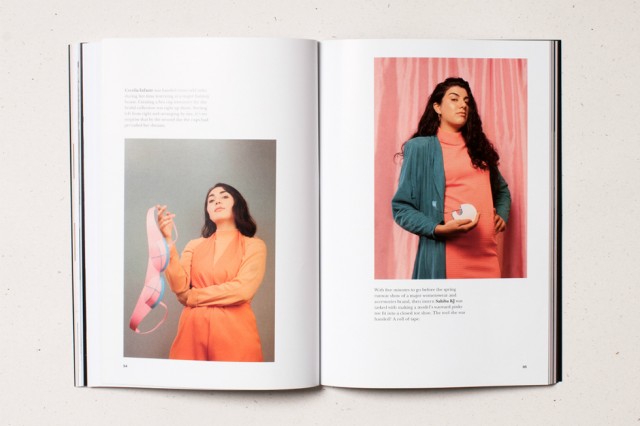
There is also an element of longevity to print that the fast-paced climate of web can’t match, and vice versa. Do the standards suffer? “Print demands an editorial standard that the web rarely does. Aside from a few obvious reputable sources, web editorial is like the Wild Wild West; you could make a mistake, somebody calls you out on Twitter for it, you rush back to change it and hope that nobody’s taken a screenshot.”
As well as managing the magazine and web platforms at Intern, Dudson also travels the country delivering workshops and presentations to students, which is where we had met briefly the Friday before, at his visiting lecture at Liverpool School of Art and Design. He delivered a presentation which asked the design students to define their own internship experience as they approach graduation. He encourages designers — and anyone within the arts — to think creatively about their career, to experiment, take risks and to do something different. These examples may make Dudson sound like Anthony Burrill, but I would align his character more to the likes of Karl Pilkington’s “Bullshit Man”; someone finally calling out the murky ethics which surround internships and specifically the — lack of — financial support associated with them.
During Dudson’s presentation, he chose to hang a tote bag (which have now sold out on the Intern online shop) from the mic stand which reads boldly, “F YOU PAY ME”; a mantra coined by the Queen Bee of Pop, Beyoncé, that Intern have adopted to promote their goal of young people ceasing to offer to work for free. Unpaid internships have become such a phenomena that the young talent of creative industries are beginning to offer willingly to work for free, usually for the places that can most afford to pay.
F YOU PAY ME transpired to become the name of the first in (hopefully) a series of creative career advice events, hosted in Manchester in January of this year. Dudson boasts that there was a “100% attendance for the booked element, which amongst students must be a record”; which suggests that the need for more informative and realistic advice for navigating the creative industries is present amongst young people, and Intern is certainly helping close that gap in the market.
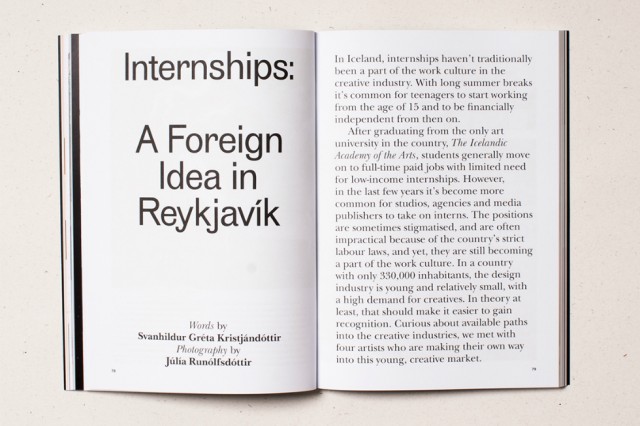
Another area which Alec is cautiously maintaining authenticity in is the relationship between Intern and their sponsors, as he’s aware that “we could undermine the integrity of the brand overnight”, and integrity is something that is particularly essential when challenging ethical issues within the industry. “When you’re working with partners and advertisers, there’s got to be a clear connection between them and you, or else it looks out of place. Particularly with a generation of readers who are hyper-aware of advertising in all its forms.”
Fortunately, he’s found a strategy that works.
“I’ve been really pleased so far with our Issue Four print partners being receptive to the new online format. It’s a good opportunity for us to launch things online as partnerships, and put them out as case studies for new partners who we can then devise new series and features with.”
“That’s the next stage, and it’s always one that comes less naturally to me, because I’m not a salesman, but it’s an imperative part of the business. Without being able to build those relationships and keep them going, there’s not a business. It’s an awkward reality.”
Dudson strikes me as someone who is hyper-aware of the dark side of the industry he’s working in. Maybe unsurprisingly, Alec’s educational background is in Sociology; he studied to MA level in Manchester where Intern is now based, as well as having two magazine internships under his belt at Boat in London, and another at Domus in Milan. We talk cynically about some of the frightening commercial trends that are increasingly being implemented by bigger companies. “I’m worried by anything that’s been identified as a consumer trend or habit”, he muses. “How long until something else is pushed as ‘the thing’ that is important for people to affiliate themselves with?”
However, Dudson’s sure that this won’t be the case with Intern’s readership. “The reason people react to it so well, is not because it’s the most beautiful magazine they’ve ever seen in their life, not because the content is the most incredible” – both things I’m sure a lot of young readers would argue is untrue – “it’s because the purpose of it is something that they can associate with, and feels good to be part of, and involved in a movement that intrinsically is there to help people.”
A proud moment for Dudson was when he received an email from a student who was writing her dissertation about visibility of female practitioners on art and design websites, who had discovered that “Intern was an anomaly in her research, because there were more female features on the website than male.” A fact that validates the effectiveness of Intern’s goal of representing the underrepresented, and giving a voice to the young people that Dudson, and Intern, believe are the future.
Alice Gray



